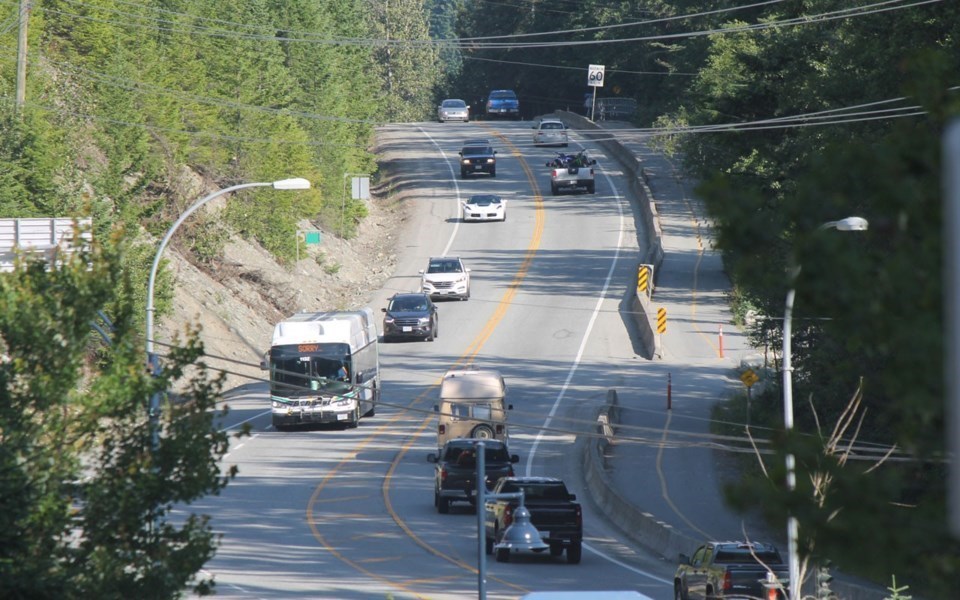In this week’s cover feature, you’ll read personal essays by more than a dozen Grade 11 students from Mount Currie’s Xet’ólacw Community School.
The feature is timely, with Canadians celebrating National Indigenous Peoples Day on Wednesday, June 21, but the stories told and issues raised aren’t tied to any one day.
They simply offer insight into one First Nations community, as experienced by the young people who live there.
The feature is the result of an April school visit, in which teacher Charlotte Jacklein brought students from her socials class to Pique’s Function Junction office to discuss newspapers, journalism, and issues pertinent to Mount Currie and its young people.
Over the course of two hours or so, we answered questions, workshopped story pitches, and talked through different issues impacting the community.
These types of visits are always worthwhile, and often as illuminating for us as they (hopefully) are for the students.
At one point in the discussion, the students asked why some stories Pique publishes are seemingly written in a negative light.
But journalists don’t set out to portray anything in any kind of light (at least not the good ones). The reality is that news, by its very nature, is often negative. As one of my journalism professors said about a non-story I filed as a pup reporter way back when, “nobody wants to read about how the trains are running on time.”
And it’s true. Post an even marginally obvious headline to Facebook and see how long it takes for some keyboard critic to comment “slow news day?” or “how is this news?” (Bonus points if they address Pique as if it’s a person, with its own thoughts and feelings and agenda, and not an inanimate object.)
It’s hard to blame them. It’s right there in the word, after all: news is literally that which is new; the strange, the bizarre, the out-of-the-ordinary; the exceptional, the unexplained, the fantastic; and yes, the catastrophic, the disastrous, and the negative.
But, as I told the students—and this is good advice for everybody—you have more influence over what you see in the news than you may realize.
Want to read more good news stories? Go do something positive for us to write about. Effect positive change, and we’ll be thrilled to write about all the good you’re doing.
As an editor, I take much more joy out of assigning fun, quirky, good-news stories than I do out of tough stories rooted in tragedy and suffering, or complicated, petty, personal messes between private parties.
But people are less inclined to get in touch about the good things, it seems. Many just arrive angry, dull axes in hand and petty grievances clouding their judgment.
The stories in this week’s cover feature are simple, but powerful, and they touch on important messages for all of us, whether that’s a plea for less littering and more trash cans, better access to simple services like shops and banks, or even just an affirmation of the Lil’wat Nation’s history and unceded territories.
It’s easy to look at problems in our communities and feel defeated, or hopeless—but it’s simply not productive. We can’t fix every small annoyance, or correct each injustice, of course. But it is incumbent on each of us to try, in any small way we can.
That could be by attending council meetings, or writing letters; joining committees or community groups; starting our own volunteer initiatives, or non-profits; or writing letters or pitching stories to the local newspaper about issues that aren’t getting proper attention.
Some of these young people from Mount Currie have already taken the first step, by identifying problems in their community that they want to see fixed, or changed. What comes next is up to them.
All politics is local, after all, and the best way to effect change is at the local level.
Among the many good points raised in this week’s cover feature, one in particular sticks out like a black bear in the bush: the lack of reasonable transportation options for Mount Currie residents, and others living in the Sea to Sky.
This is not a new issue by any stretch, and it’s one our regional leaders have pushed for years with no luck.
Over and over they have made the case for a regional transit system in the Sea to Sky, connecting Mount Currie to the Lower Mainland, and over and over the provincial government has ignored them, despite including specific mention of the project in mandate letters to a pair of ministers in 2020.
Well, the new provincial budget is out, and surprise, surprise: no money for regional transit in the Sea to Sky.
The lack of action from our provincial government on this file has always been a head-scratcher, but in light of the direct appeal from one of the students in this week’s cover feature, it somehow feels especially shameful, and borderline unconscionable.
Here is a real issue, directly affecting residents of a First Nations community—it’s impacting their ability to access basic services, to find employment, to experience the world beyond their town, and to fully prosper in the ways they otherwise could. Yet our provincial government sits on its hands for years, unable to scrounge the relative pocket change needed to get a service off the ground (about $3.5 million in 2017 dollars—even factoring in inflation, that is chump change when you think about the money Whistler sends to Victoria each day in tax revenue).
Maybe if some of these young Mount Currie students take their message directly to our provincial government, the bean counters will be forced to face the impact this is having on real people in the corridor.
But they’ll have to get their parents or older siblings to drive them—because the government hasn’t made regional transit or basic mobility a priority for them.




